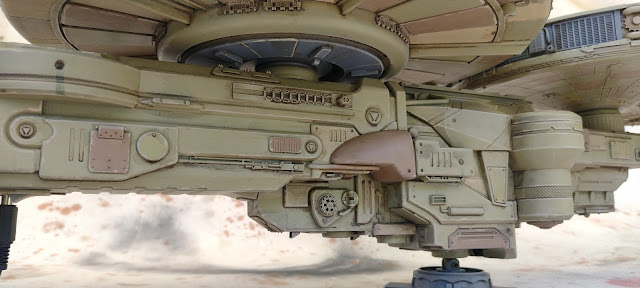I've had three white plastic (acrylic) ceiling emergency exit sign housings in my stash for at least a decade. For a long time I would dig them out and ponder what to do with them without much success. Years later I got hold of four plastic boxes which were the outer casing of small parts draws. With these boxes on hand a concept bubbled up and I thought of the exit signs as the basis for a sensor array of a coms tower of some sort.
At the time I did a rough pencil sketch of the concept which has unfortunately been lost in a hard drive death.
The concept however had been firmly etched on my brain and so I decided now is the time to start to put it all together.
The picture below shows the nearly 2 metre high structure. It is constructed in sections to enable easily breaking down for future transport.
The base section is a length of yellow PVC Gas main pipe with a 9mm plywood disc glued in one end. On top of the plywood is screwed a 150mm PVC pipe end cap.
The next section comprises a 500mm length of 150mm pvc pipe which push fits into the end cap. Two 9mm ply supports then hold three of the plastic parts draw boxes arranged radially around the pipe.
The third section starts with a 150mm PVC end cap to which is bolted a 90mm pvc flange. Over the flange is glued a cone shape from a cut down acrylic bowl. A length of 90mm storm water pipe is then glued into the flange. More 9mm ply supports are then slid over and glued with superglue to the 90mm pipe to support the exit signs. On top of the 90mm pipe is a 90mm ground vent to which is glued a surround from a plastic battery operated push light with a disc of more 9mm ply. To the ply is glued a 40mm pipe reducer with the small end down glued through a hole in the plywood disc.
The final section is made from an assortment of PVC pipe and reducers until it ends with some grey PVC electrical conduit at the top. There are a couple of black polycarbonate side flanges from Prusa filament reels as platforms as well as kit part electrical boxes. Some smaller bits of PVC pipe with domed end caps make up the cylindrical shapes on the top platform. In the pictures below I have a Bruder toy figure for reference at 1/16 scale. The blue grey antennae is ( I think) from a Star Wars B wing transformers toy.
This is just the start of this project with a great deal of surface detail still to come. So far it has turned out very like the original design sketch as I remember it, which is promising.
Thanks for looking.
More soon...



























































